Japanese Used Cars TOP > BLOG > Car Maintenance > The Easy Way to Let Air Out of your Car Tires
by Carusedjp
Last Updated on 9月 23, 2022 by Carusedjp
Many car owners think that when they over inflate their tires, they can expect better fuel efficiency and more responsive handling. Even those who buy used trucks for sale that over inflating their tires would improve the condition of their vehicle. However, the truth is that over inflated tires can be dangerous.
If you want the best fuel efficiency and handling possible for your vehicle, then it would be advisable to follow the manufacturer-recommended tire pressure level. Your manual will tell you what the optimum tire pressure for your car is.
Keep in mind that these numbers were determined through a series of tests and studies for each car model, with consideration to the following factors:
Search Japanese Used Cars
When you exceed the manufacturer-recommended pressure levels, your tires will wear out sooner than expected. It is worth noting that tires tend to round out on the tread section when they are over inflated. Consequently, the center wears out at a faster rate than the outer edges. It is possible that your tires will only reach half their actual lifespan.
Aside from that, over inflating your tires can also cause traction loss. Even when you drive on regular roads and conditions, over inflated tires can cause your vehicle to lose traction. This would lead to accidents. This problem becomes especially evident during the winter season. Your rides can become harsher as well. When tires are over inflated, they tend to give a bumpier rider. Needless to say, you will feel every dip in the road.
Your rides can become harsher as well. When tires are over inflated, they tend to give a bumpier rider. Needless to say, you will feel every dip in the road.
It is recommended for every driver to own a digital tire gauge. This is one of the items you can keep in the glove compartment. You can also keep a notebook where you can write down the tire pressure and the fuel economy. Here are the steps in checking your tire pressure:

Find Used Trucks here!
As we’ve mentioned, you will find the manufacturer-recommended pressure level on the tire’s sidewall. Here’s how to let air out of over inflated tires:

How to Buy Japanese Car
Share this article:
Previous
Next
PPMC-Transport is supported by its audience. When you buy through our links, we may earn an affiliate commission. Learn more
Written by Steven Schiller
Fact checked by Henry Speciale
Overinflating your tire results in tread wear, a bouncy ride, and the risk of a tire blowout. That’s why we need to adhere to the required psi for our type of tires.
In many cases, we also need to deflate our tires quickly to repair or move the vehicle. Therefore, it is important to know how to let air out of a tire.
Read the detailed guide below
Table of Contents
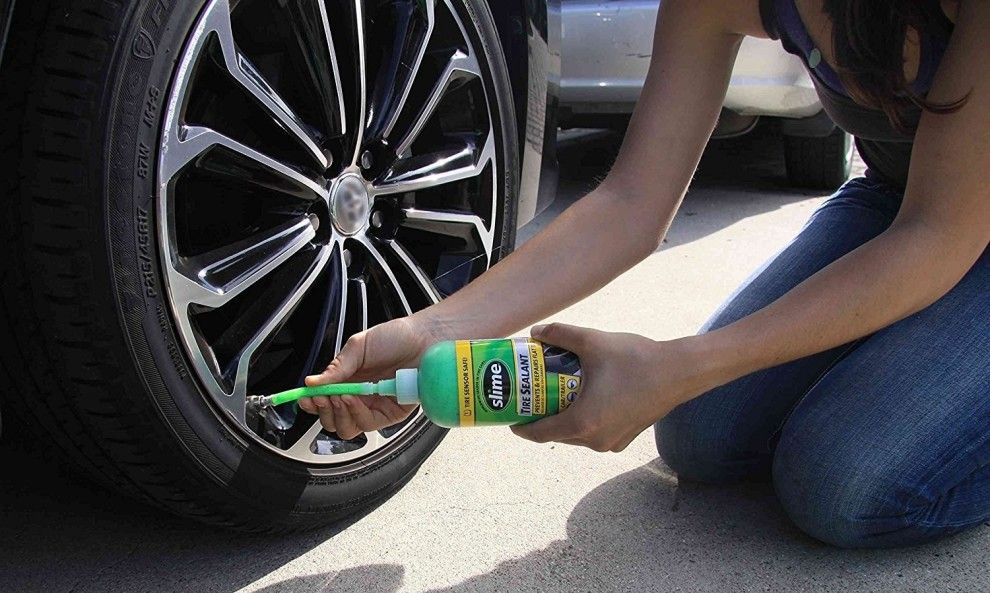 With screwdriver or needle-nose pliers
With screwdriver or needle-nose pliersThere are two ways to remove air from a tire using a screwdriver or needle-nose pliers.
If you want to let air out of tire fast, unscrew the valve or metal pin. Then, please put it back once you reach the ideal tire pressure.
Don’t forget to reattach the cap because it protects the valve from dirt.
You need to detach the cap first to find the metal pin.
Then, use a flathead screwdriver or needle-nose pliers to press the tip of the metal pin inward to release air from tire.
The air shoots out of the valve as long as you apply pressure on the pin. It stops the moment you lift the screwdriver.
Therefore, stop pressing the pin when you reach the ideal tire pressure.
A tire deflator is a brass plated device that lets you remove air from a tire more conveniently.
You can configure four tire deflators to your tire’s ideal PSI and simultaneously take the air out of all your car or truck tires.
Tire deflators are ideal if you have always been a victim of letting air out of tires prank. These automatic devices will save you time checking tire pressure and deflating your tire as needed.
To remove air from tire, it is necessary to identify the type of valve used in the vehicle.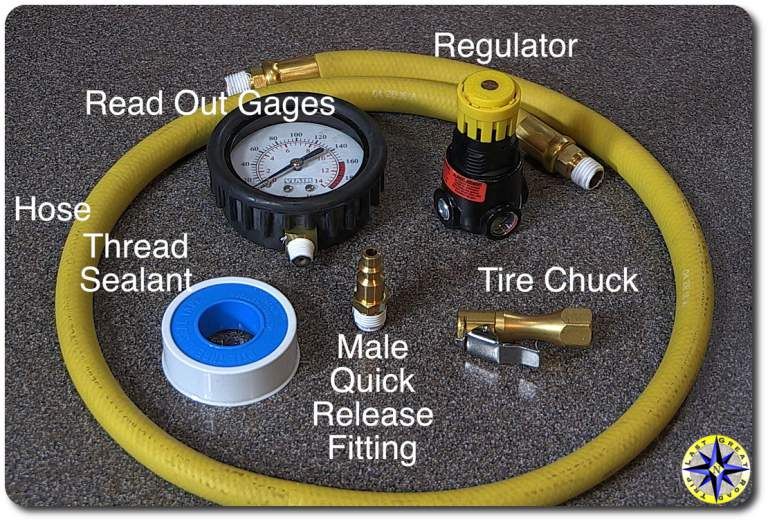
The valve stem is a small cylindrical tube controlling the tire’s airflow. It is located in between the spokes of the tire. It protrudes on the tire for about 1-2 inches.
Some valves do not need tools to take air out of tire.
You can remove the cap from the valve and let it release excess air on its own. You can hear a hissing sound when it starts.
Deflating a tire is possible even without screwdriver. However, using the following tools will ensure you reduce tire pressure properly and safely.
A Tire pressure gauge is a tire pressure reading device. Please attach it to the valve before and after deflating a tire to ensure the required pressure range.
For instance, if you are stuck on sand or mud, you can get out of it without a tool by releasing about half the air in the tires.

However, it is safest to check the PSI recommendation of the vehicle manufacturer because the front and back tires have different PSI requirements.
A lever or hydraulic jack is a mechanical device used to lift the vehicle while deflating all tires. Look for the jack points of the car to mount it. They are located under your vehicle’s chassis, near the front and back tires.
With machine like a jack stand, the car or truck is safe while you let air out of car tire. Jack stands can support the weight of the vehicle while being lifted by hydraulic jacks.
All tires must have the recommended PSI by the car manufacturer regardless of tire brand. The front and back tires have different ideal PSI because of weight while driving.
The PSI recommendation can be found on the sticker inside the driver’s door.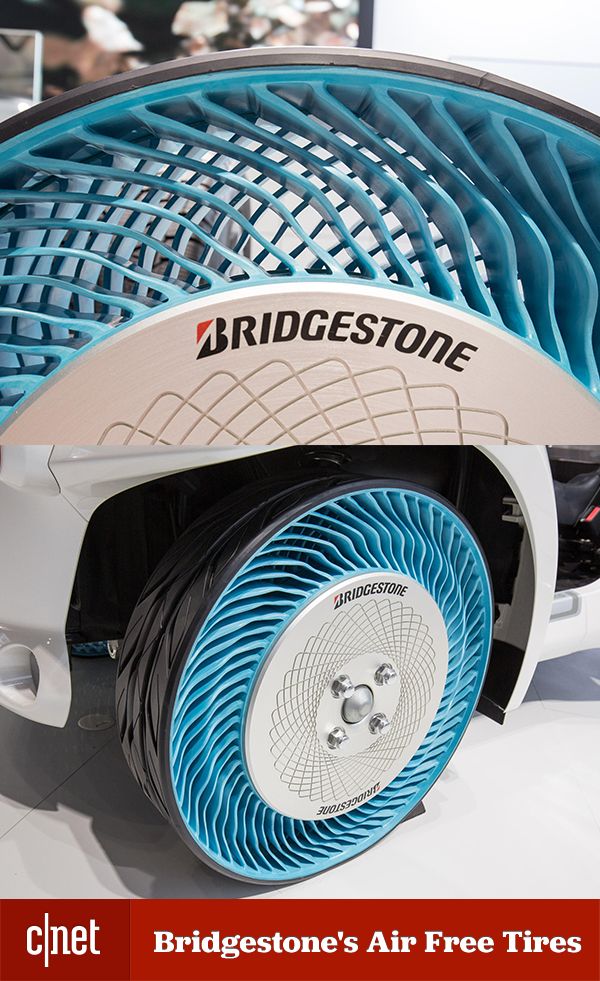 If not, check the vehicle’s manual.
If not, check the vehicle’s manual.
If possible, write down the psi of each car tire so you won’t get confused.
Reading the tire pressure with a tire gauge does not let the air out. Instead, the tire pressure gauge has a small knob or plunger at the back part of it to inflate it.
Letting air out of hot tires is unsafe. When tires are inflated by heat, and you release the extra hot pressure, it may cause the tire to blow or catch fire. In this connection, it is advised to stop driving when the tires are too hot to touch and wait for them to cool down overnight or park for at least two hours at gas station.
Knowing how to let air out of a tire with or without tools is a good skill that drivers should not overlook because it can guarantee safe travel and longer service life for tires.
It would be great to invest in a tire pressure gauge to check your tire pressure regularly anywhere.
If you want to know more about the causes of tire overinflation, don’t hesitate to ask questions.
Categories FAQsI'm Henry, the content writer for PPMC Transport. We build our site entirely on experience and extensive market and customer research. My goal is to create a trusted platform where people can go to determine what is best for their vehicles in terms of safety and convenience. Keep an eye out for our useful guide!
- Speciale Henry
Author: Mikhail Balandin
Every motorist is at least a little worried about his car.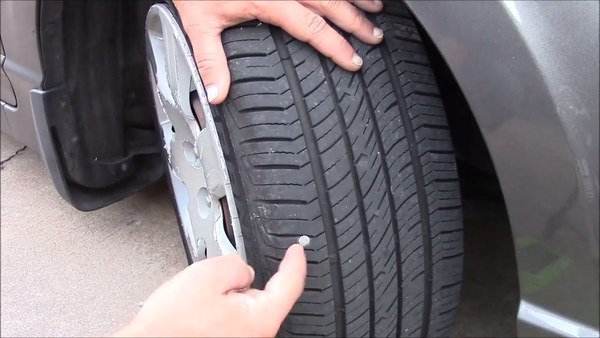 He listens to the operation of the engine, listens to the sounds of the running gear, gets upset by the scratches on the paintwork. But many people remember about wheels only when it’s too late to do something. It already hits the steering wheel, and the geometry is critically violated ... But the wheels, like the braking system, are the basis of safe driving. Let's take a look at how to properly monitor the condition of the wheels, and what we usually do wrong.
He listens to the operation of the engine, listens to the sounds of the running gear, gets upset by the scratches on the paintwork. But many people remember about wheels only when it’s too late to do something. It already hits the steering wheel, and the geometry is critically violated ... But the wheels, like the braking system, are the basis of safe driving. Let's take a look at how to properly monitor the condition of the wheels, and what we usually do wrong.
Many of us believe that tires never age. Like, there is a protector - you can ride. It's not like that at all. Like any other part of a car, the life of a tire is limited not only by mileage and wear, but also by time and aging. Manufacturers set a different service life, on average - five to seven years. The fact is that it contains natural rubber, which ages. As a result of this sad and inevitable process, the tire is destroyed.
First of all, it “dubs” (a summer tire, which is initially harder than a winter one, does this especially quickly), which noticeably affects handling. By the way, winter is also not eternal, and it deforms even faster than summer (again, due to its natural softness), and delaminates. And then there are hernias on the old rubber on the treadmill.
By the way, winter is also not eternal, and it deforms even faster than summer (again, due to its natural softness), and delaminates. And then there are hernias on the old rubber on the treadmill.
The company's educator, who helped write the material, spoke of a case that perfectly illustrates the effects of aging. A customer came to the tire shop with a side cut that couldn't be repaired. He asked to replace the damaged tire with a spare tire. It was new (read - without a run), but spent its entire life already long in the trunk. The wheel was assembled, balanced and put on the car. She had enough for two weeks, then she had to be thrown out: she simply grew old and, despite her outwardly perfect condition, she could not work.
So it's dangerous to drive for ten years on one rubber and rejoice at how well it has been preserved. And if it is impossible to stretch the life of a tire indefinitely, then there is a possibility not to kill the tire ahead of time.
It is clear that many factors affect tire longevity.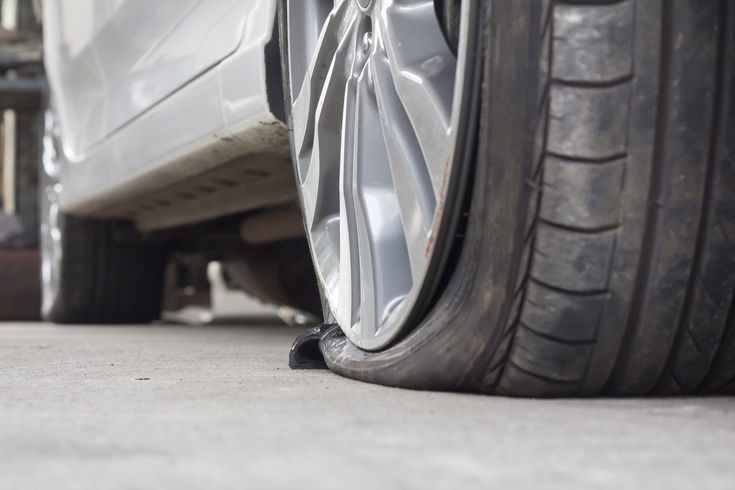 But there are three main things that allow you to drive on the tire at least those years guaranteed by the manufacturer. It's balancing and proper pressure and storage. Let's start with balancing.
But there are three main things that allow you to drive on the tire at least those years guaranteed by the manufacturer. It's balancing and proper pressure and storage. Let's start with balancing.
Everyone knows that wheel balancing is a must. And about how often this needs to be done, most do not even know. In fact, there is one simple rule: change the oil - balance the wheels. It probably sounds strange, but 10-15 thousand kilometers is the optimal mileage between checking the balance. And this is for wheels from 16 inches. Small wheels (from 13 to 15 inches) need to be balanced even more often - once every 7-8 thousand.
Well, everyone knows what the imbalance leads to: uneven wear of the tread blocks, in especially neglected cases, it also hits the steering wheel. Balancing is not as expensive as a new tire (or even a running gear repair).
Checking the pressure with a kick on the wheel is as intelligent as assessing the temperature of the exhaust gases with your finger (only it won't cause injury). This should be done with a pressure gauge, and not a pressure gauge bought in 1998 and made in Sichuan province, but a pressure gauge that at least undergoes periodic verification. And those pressure gauges that are at some gas stations are also not among those, because they show pressure depending on the weather, the mood of whales off the western coast of Australia and Trump's tweets. In a word, you need a good pressure gauge, because the difference between 1.8 and 2.1 atmospheres is really big, and low-quality instruments have very large errors.
This should be done with a pressure gauge, and not a pressure gauge bought in 1998 and made in Sichuan province, but a pressure gauge that at least undergoes periodic verification. And those pressure gauges that are at some gas stations are also not among those, because they show pressure depending on the weather, the mood of whales off the western coast of Australia and Trump's tweets. In a word, you need a good pressure gauge, because the difference between 1.8 and 2.1 atmospheres is really big, and low-quality instruments have very large errors.
The pressure to be maintained in the tires is indicated in the car's owner's manual and (usually) on a sticker in the doorway. The fact that the pressure should differ depending on the season (someone thinks that in winter the pressure should be less or more than in summer) is a myth. It should always correspond to what is indicated in the instructions.
But what is true is that in case of temperature fluctuations (for example, during a sharp cold snap), it will not be out of place to check the pressure unscheduled: it really depends on external conditions.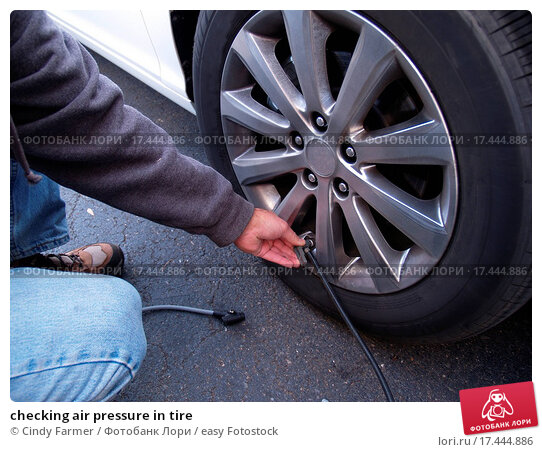 A brief descent is only possible to get out of the mud. This technique is used, it works, but after overcoming a difficult section of the wheel, you need to pump up. In the end, the correct pressure will save not only the life of the tires, but also ... yes, the chassis.
A brief descent is only possible to get out of the mud. This technique is used, it works, but after overcoming a difficult section of the wheel, you need to pump up. In the end, the correct pressure will save not only the life of the tires, but also ... yes, the chassis.
And finally, storage. This is where we usually make the most mistakes. There is such a GOST R54266-2010, which describes in great detail how to properly store tires. Much has already been said about this, so we will not dwell on it in detail. The basic rule is that it is wrong to store on a balcony, in iron garages, flooded with water and frozen, in direct sunlight. Complete wheels must be stacked or stored suspended, tires separately - upright. And if you want to deposit the wheels with a company that offers such services, find out how the wheels are stored there. In reputable offices, all conditions are usually observed.
If you do store the tires somewhere in the garage, wash them well. Especially winter ones: after the season, a lot of road chemicals remain on them, which greatly reduces their resource.
Know how to piss off a good tire fitter? Call the tire a tyre, balloon or ramp. And add: fifteenth radius. Indeed, a tire is a greeting from the chamber past, a balloon and a ramp are from even more ancient times. And the number in combination R15 or R16 is not a radius, but a diameter. The letter R indicates the type of tire - radial .
It is not surprising that, confusing terminology and dimensions, many make an even bigger mistake by “shoeing” their car in the wrong size wheels. For some reason, NFS victims think that the Priora on 18-inch wheels and low-profile tires is cool, beautiful and sporty. In fact, of course, it's not like that. Firstly, 79-80% of the smoothness of movement is provided just by the tire, and driving on “duct tape” is simply not comfortable. Secondly, the risk of damaging both the tire and the disk grows many times, and taking into account the cost of the wheel, it turns out to be completely sad.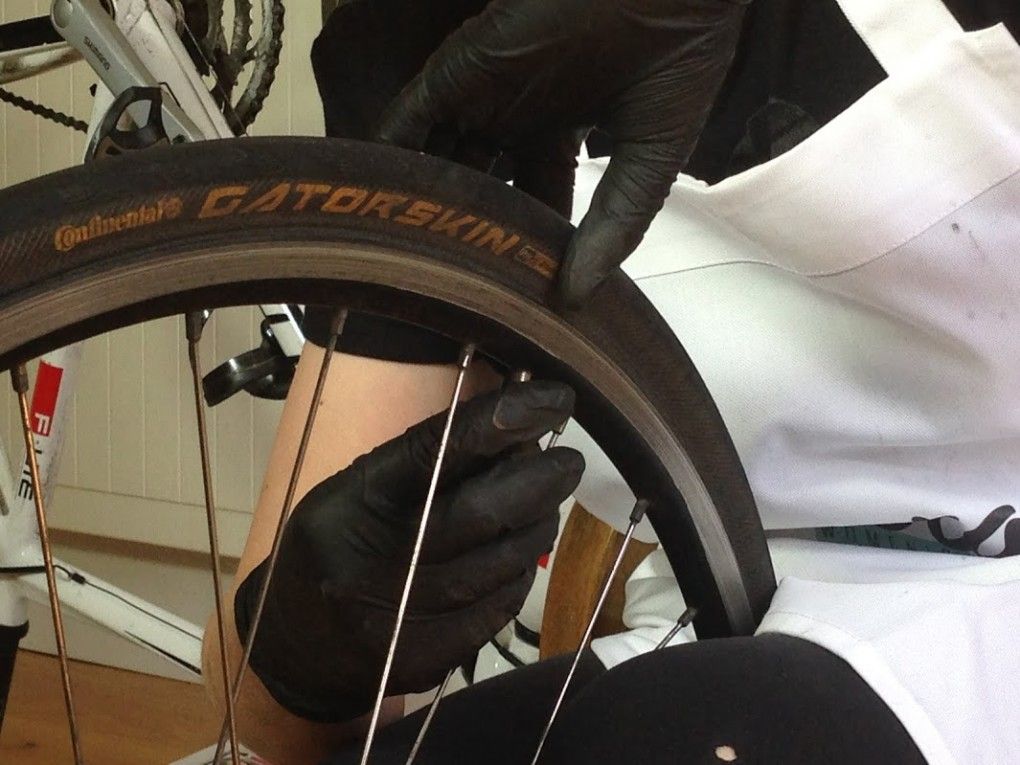
In fairness, we admit that sometimes it makes sense to install large wheels. For example, if the car is a sports equipment. Well, or brake mechanisms of such a size are installed that a standard disk does not fit on them. But admit it, have you often seen such machines ?
But there are indeed many shortcomings. The most important thing is an increase in the contact area, which is critical for handling on winter tires, especially on studded ones. The larger the contact patch, the lower the specific pressure, and hence the grip. And since large-diameter discs usually imply a large tire width, the pressure drop with a small weight of a small car is very significant. And handling can get worse. In summer, the situation is somewhat different, and a large spot will really benefit handling. But to the detriment of fuel economy.
By the way, here the question arises: does it make sense to pump tires with nitrogen? Indeed, at first glance, this whole nitrogen story looks more like a cunning plan of marketers. Actually, it makes sense. At least based on the fact that Charles's law (for those who do not remember the school course: the pressure of a gas of a fixed mass and a fixed volume is directly proportional to the absolute temperature of the gas) works only for an ideal gas.
Actually, it makes sense. At least based on the fact that Charles's law (for those who do not remember the school course: the pressure of a gas of a fixed mass and a fixed volume is directly proportional to the absolute temperature of the gas) works only for an ideal gas.
In other words, to reduce the pressure difference between a hot and cold tire, any pure gas without impurities (any pure gas is closer to ideal than air, which is a mixture of gases) will do. They pump nitrogen, because it is most of all in the air, and the cost of its allocation is minimal. But the assertion that nitrogen is preferable to air due to reduced corrosion of disks (nitrogen, unlike ordinary air, does not contain water) is a myth. You have to drive a lot of decades on the same discs to notice the difference. The car will rot earlier, so there is no need to be afraid of corrosion of the disc due to air, it has completely different reasons for this.
Well, if we talk about myths, let's recall another misconception that claims that there is no big difference between imported and domestic tires, because both are made from Russian rubber.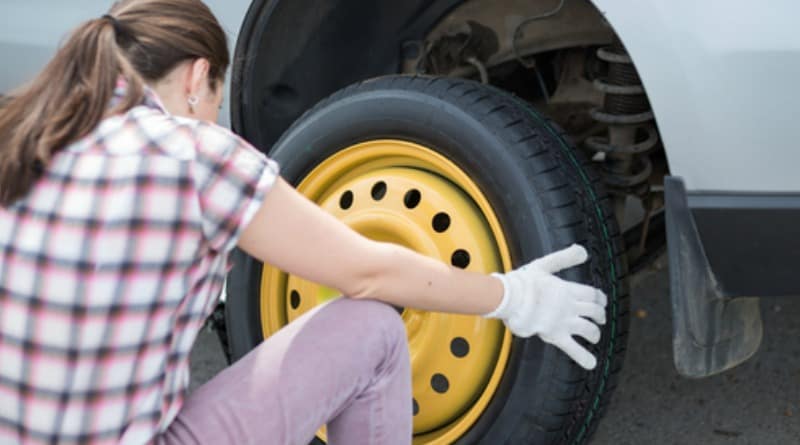 There is only a grain of truth in this statement, which is that our synthetic rubber is indeed used as a base almost all over the world.
There is only a grain of truth in this statement, which is that our synthetic rubber is indeed used as a base almost all over the world.
But this does not mean that there is no difference between “Yaroslavka” and “Khakka”. What is more important here is what additives are used, how manufacturing accuracy is observed, what is the tread pattern and tire design in principle. So one rubber can make both a good tire and a bad one. Actually, that's how it happens. In fairness, we note that among the Russian rubber there is a good one. But we won’t name the model, we haven’t been paid for it yet.
Now let's move on to another interesting topic, in which there are more controversial points than in the interpretation of Vanga's prophecies. It's about tire repair.
Tire damage is a common thing. Anything can happen on the road, and it is impossible to avoid it. But you can avoid unwanted ways that you can then restore the bus.
There is nothing dangerous about side cuts. The world's leading manufacturers of tire repair materials allow damage up to 50 x 30 mm. If the damage does not exceed these dimensions and is located in the repair area, then good tire shops will offer to restore the tire with a lifetime warranty. But if the workshop in which the wheel had to be repaired raises doubts, it is better to rearrange it anyway.
But experts never recommend installing such a fashionable tourniquet at all. He came to us along with tubeless tires. In those days, motorists were still so handy that they considered field repair of a wheel not a very difficult job, so not only spares were driven in the car, but also assembly machines for assembling and disassembling wheels. And if it was possible to do this with a camera, then with a tubeless wheel the focus will not work, for its assembly (and disassembly) you definitely need a machine.
That's when the tourniquet became something like a “nerve calmer”: if desired, a puncture can be repaired in a few minutes, and often you don’t even have to remove the wheel. In the meantime, when installing a harness, additional damage is caused to the tire (you must have seen how the hole is enlarged in this case). Sooner or later, a hernia appears in this place, so if it is possible to get to the tire shop with the help of regular pumping, it is better not to put a tourniquet. And already in the workshop to put a patch or “fungus”. Moreover, the patch restores the bus to the factory state. An interesting fact: the specialist calls the tourniquet “the last cartridge”. Probably not by chance.
In the meantime, when installing a harness, additional damage is caused to the tire (you must have seen how the hole is enlarged in this case). Sooner or later, a hernia appears in this place, so if it is possible to get to the tire shop with the help of regular pumping, it is better not to put a tourniquet. And already in the workshop to put a patch or “fungus”. Moreover, the patch restores the bus to the factory state. An interesting fact: the specialist calls the tourniquet “the last cartridge”. Probably not by chance.
Repair with a tourniquet is permissible only in two cases: when there is no other way to get to the workshop and if the tire is already so old that it is not a pity to spoil it. In all other cases, it is better not to use a tourniquet. And even more so, you don’t have to agree to such a repair in a tire shop. There you need to choose vulcanization. Please note that hot vulcanization takes about three hours, cold vulcanization takes 20 minutes, but if the damage is located in the softest part (for example, on the sidewall), hot vulcanization will be preferable.
But nothing bad can be said about the studding. But again - about high-quality studding. Previously, new spikes were placed next to the regular socket from the old spike, drilling a new socket. At the same time, they put the usual factory spike. This method has big drawbacks: new nests do not bring any benefit, and the studding pattern changes. Now there are other technologies: new spikes with an enlarged bottom are placed in old holes. They stay there securely, and the performance of the tire does not decrease. You need to run in such a studded tire like a new one: 300-500 kilometers without sudden maneuvers and with a maximum speed of no more than 80 km / h.
Most of the trouble that wheels can bring can be avoided with careful attention to them. Malfunctions are usually imperceptible, especially on modern heavy machines stuffed with electronics, which often eliminates signs of tire failure (for example, the stability control system reduces the effect of steering to the side if there is insufficient pressure in any wheel). And the last stage - beating in the steering wheel - is also usually noticeably late, when the wheel geometry is completely broken. And the wheels require no less attention than other car systems.
And the last stage - beating in the steering wheel - is also usually noticeably late, when the wheel geometry is completely broken. And the wheels require no less attention than other car systems.
Just imagine: a valve (yes, a valve, not a “peep” or “nipple”) at a speed of 60 km / h on a 14-inch wheel is pulled with a force of 1.3 kg. But at first glance, it is a very small and inconspicuous detail. But even its easy “tuning” in the form of caps from Aliexpress can lead to sad consequences: they are much heavier than regular plastic ones, and the centrifugal force goes beyond what is permitted.
The presence of a hernia, tourniquet, cut, puncture - all this must be found and eliminated in time. Well, watch out for wear and tear. Wear indicators on all tires have a standard height of 1.6 mm, while a winter tire is considered unusable with a residual tread height of 4 mm. Yes, and a summer tire with a height of 1.6 mm finally stops draining water, and this is a direct prerequisite for hydroplaning .
External examination is good, but not enough. The wheels must also undergo periodic diagnostics, they also need to be shown to specialists.
In general, it is rightly said that safety starts with the wheels. And you need to understand this in time.
Poll
Did you see anything new in the selection?
Your vote
Total votes:
compact van diesel practice tires and wheels
Articles / Interesting 5 reasons to buy and not buy Geely Atlas Impressive and harmonious, solid and spectacular, very comfortable, but somewhat slow, not the most economical, but quite reliable .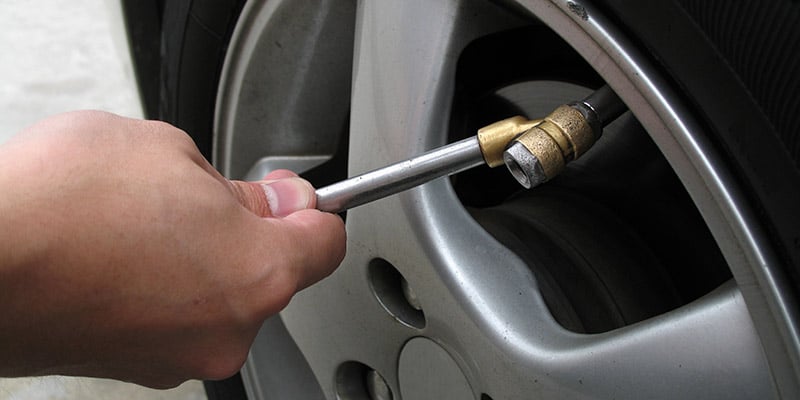 .. All this is Geely Atlas, a car, in its time ... 1706 one 0 23.10.2022
.. All this is Geely Atlas, a car, in its time ... 1706 one 0 23.10.2022
Articles / Practice Half a liter, potatoes and mustard to taste: folk recipes for auto chemical substitutes In the current conditions, it is easy to close your eyes and imagine that all foreign manufacturers of auto chemical goods have left Russia for some reason. Well, or just mentally transport yourself to a few ten ... 612 0 one 21.10.2022
Articles / Electric car Expensive, dangerous and nowhere to charge: 5 main misconceptions that prevent you from buying an electric car Being afraid of something new is normal. Once upon a time, people were afraid of an injector or an automatic transmission, although now these units cannot scare anyone. Pretty much the same... 2638 9 one 21.10.2022
Once upon a time, people were afraid of an injector or an automatic transmission, although now these units cannot scare anyone. Pretty much the same... 2638 9 one 21.10.2022
Test drives / Test drive Haval Dargo vs Mitsubishi Outlander: the dog is barking, the stranger is coming In the Haval dealership in the south of Moscow, life is in full swing: buyers look at cars, communicate with managers and sign some papers. While I was waiting for the test Dargo, the same cross... 14261 7 192 09/13/2022
Test drives / Test drive Motor from Mercedes, emblem from Renault, assembly from Dacia: test drive of the European Logan 1. 0 It would seem that what's new can be told about the second generation Renault Logan, known to every Russian taxi driver, as they say, up and down? However, this car has... 12210 ten 41 08/13/2022
0 It would seem that what's new can be told about the second generation Renault Logan, known to every Russian taxi driver, as they say, up and down? However, this car has... 12210 ten 41 08/13/2022
Test drives / Test drive Geely Coolray vs Haval Jolion: Free Cheese? If! Do you want to buy a car today with a full warranty, on credit at an adequate rate, without wild dealer markups? Now this is still a task, because a full-fledged chain of "representation - s... 9182 25 thirty 08/10/2022
Products: brake cleaners, rim cleaner.
Equipment: all modern tire systems are powered by compressed air: air guns for loosening wheels, tire changer, inflation guns. Therefore, the main tool for tire fitting is a compressor. In 99% of cases, reciprocating compressors with a capacity of 400 lmin are used. These compressors require ISO VG 46 and 100 compressor oils, depending on the compressor manufacturer's recommendations. Oil change, on average, 200-250 hours when using mineral oils, that is, about once a month during the tire season. Using synthetic oils, such as Liqui Moly LM 500, article 4076, you can increase the compressor maintenance period up to two times a year.
The air gun is an important tool for quick wheel removal. It has a lubricator lubrication system, that is, oil is supplied along with compressed air using a special lubricator-lubricator. In small tire shops, they save money on lubricators and periodically bury the oil directly into the air gun. To lubricate air guns, use Liqui Moly Oil fur Pneumatikgerat, part number 7841.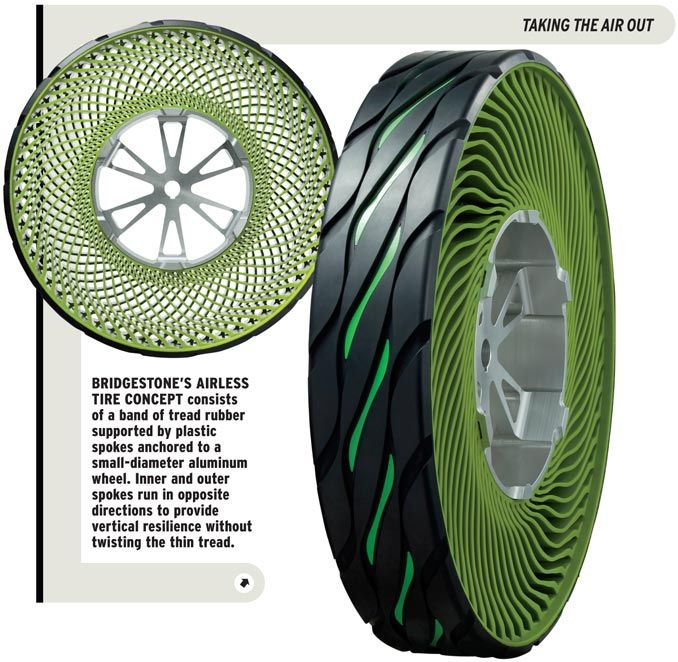
| Fig 1 | Fig 2 | Fig 3 |
To carry out work, place the vehicle at the place where the brake is to be carried out. work and fix manually Raise the vehicle with a tire jack or scissor lift, unscrew the wheel fasteners and remove the wheel. Wash the wheel in a washing machine, dry it. Using the special tool, unscrew the valve and bleed air from the wheel. Remove balancing weights, if self-adhesive weights are used, then remove the remaining glue from the rim with a rag using Liqui Moly Dichtungs Entferner. It is necessary to carefully inspect the tread for stones stuck in the sipes, since wheel balancing is meaningless with a dirty tread. If you plan to install the tire back after repair, then it is necessary to mark the position of the nipple for inflation on the tire using a special marker or chalk. The tire is installed in the same position in which it was removed from the rim. Install the cleaned wheel on the tire changer and tear off the sidewall of the tire from the rim with a spatula (Fig. 1). Next, center the wheel on the clamps (1) of the machine Fig. 2, (use plastic protective pads when working with light alloy wheels) and completely separate the sidewall of the tire from the hump with a roller (Fig. 3). Before removing the tire from the rim, apply Liqui Moly Reifen Montierenpaste to the parts of the tire adjacent to the rim.
Install the cleaned wheel on the tire changer and tear off the sidewall of the tire from the rim with a spatula (Fig. 1). Next, center the wheel on the clamps (1) of the machine Fig. 2, (use plastic protective pads when working with light alloy wheels) and completely separate the sidewall of the tire from the hump with a roller (Fig. 3). Before removing the tire from the rim, apply Liqui Moly Reifen Montierenpaste to the parts of the tire adjacent to the rim.
It is recommended to apply the paste with a flute-type brush, it is not recommended to use fly brushes (Fig. 4). Pry off the sidewall of the tire with a mounting spatula, bring it up by the heel of the machine (Fig. 5) and rotate the tire until the sidewall of the tire completely goes beyond the rim. Do the same with the bottom of the tire and remove the tire from the rim (Fig. 6).
| Figure 4 | Figure 5 | Figure 6 |
| Figure 7 | Figure 8 | Figure 9 |
Before installing a new or repaired tire, be sure to replace the valve of the tubeless tire (Fig. 7), clean the tire contact surface with a Reiniger und Ferdunner cleaner (Fig. 8), place the rim in the balancing machine (Fig. 9) and check the runout of the rim .
7), clean the tire contact surface with a Reiniger und Ferdunner cleaner (Fig. 8), place the rim in the balancing machine (Fig. 9) and check the runout of the rim .
To mount the tire, it is necessary to place the disc back into the clamps of the machine (Fig. 2). Before installing the tire, apply mounting paste to the sidewalls of the tire adjacent to the rim (Fig. 10) using a flute brush on both sidewalls of the tire. Put the tire on the disc using the machine's thrust pad (Fig. 5). Orient the tire according to the marks made earlier, in case of using a new tire, align the factory mark (yellow or white) with the tire valve by location. Inflate the tire, allow the sidewall to take the correct position on the hump of the rim, for which give an air pressure of 6-8 bar (when the tire is seated, a loud bang will occur). Check the tightness of the fit by using Leck Such Spray or immersion in a water bath. After checking the tightness, bring the pressure in the wheel to the nominal value and install it in the balancing machine.